Women considering carrying a stun gun for self-defense must understand state-specific regulations regarding concealed carry permits, as laws vary significantly across locations. The "best self-defense stun gun" should be chosen based on weight, size, ease of use, high joule output, and extended reach, with training crucial for responsible usage. Training equips women with vital skills like threat recognition and escape routes, fostering independence and confidence. Thorough research is essential to ensure the stun gun aligns with state laws, which vary regarding voltage output and banned locations like schools and airports.
In today’s world, personal safety is a top concern for many women. One effective tool gaining popularity as a means of self-defense is the stun gun. This article explores the crucial topic of concealed carry stun gun regulations from a woman’s perspective. We’ll guide you through understanding your state’s laws, the role of stun guns in personal safety, legal considerations, choosing the best self-defense stun gun, proper training, and navigating state-specific regulations. Discover how to empower yourself with the right knowledge for your peace of mind.
- Understanding Concealed Carry Laws: A Woman's Perspective
- The Role of Stun Guns in Personal Safety
- Legal Considerations for Carrying a Stun Gun
- Choosing the Right Stun Gun: Features to Consider
- Training and Responsible Use: Empowering Yourself
- State-Specific Regulations: Navigating Your Rights
Understanding Concealed Carry Laws: A Woman's Perspective
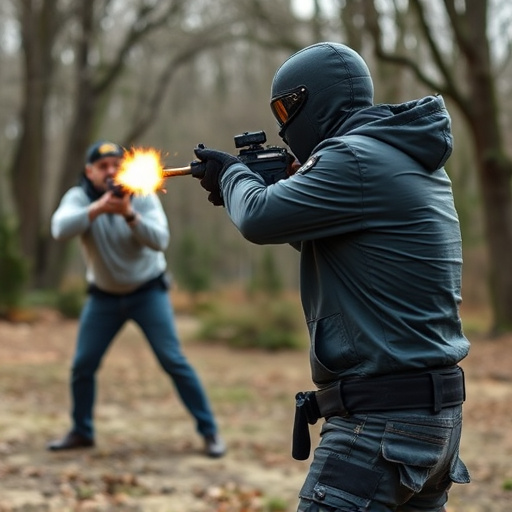
For many women, the decision to carry a stun gun for self-defense is a significant and empowering step. Understanding the regulations surrounding concealed carry is crucial, especially as laws can vary greatly from state to state. Navigating these rules is essential for ensuring compliance while possessing what could be the best self-defense stun gun for women.
When considering self-protection, women often seek effective yet compact tools. Stun guns provide a non-lethal option, allowing individuals to deter potential attackers. However, it’s vital to stay informed about local regulations to avoid legal repercussions. Some areas have strict restrictions on who can carry, what types are permitted, and where they can be used. Understanding these nuances is key to responsible self-defense preparation.
The Role of Stun Guns in Personal Safety

Stun guns have emerged as a powerful tool for personal safety, especially for women looking to protect themselves in various situations. These non-lethal weapons are designed to incapacitate an attacker temporarily, giving the user valuable time to escape or seek help. With their compact size and ease of use, stun guns are considered one of the best self-defense options for individuals who want to be prepared but prefer not to carry a firearm.
For women’s safety, stun guns offer a discreet and effective solution. They are easily concealable, allowing users to feel confident and empowered while going about their daily lives. The ‘best self-defense stun gun for women’ is often sought after due to its ability to provide immediate protection without the complexity of traditional firearms. This non-lethal approach to personal security is gaining popularity as a practical and accessible means of deterring potential threats.
Legal Considerations for Carrying a Stun Gun
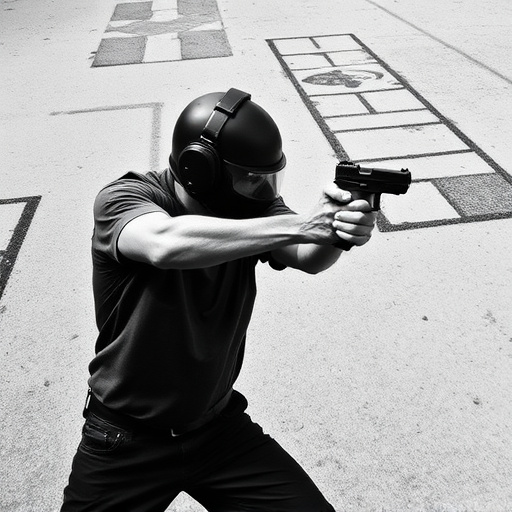
When considering legal considerations for carrying a stun gun, it’s crucial to understand that regulations vary greatly across jurisdictions. In many regions, concealed carry permits are required before purchasing and carrying a stun device like the best self-defense stun gun for women. These permits often involve strict background checks, training requirements, and age limitations. It’s essential to research your local, state, and national laws thoroughly before making a purchase to ensure compliance.
Additionally, understanding what constitutes legal self-defense is paramount. Stun guns are typically categorized as less lethal weapons, and their use should adhere to specific rules and guidelines. Misusing or employing excessive force with a stun gun can lead to serious legal repercussions. Therefore, it’s vital to be aware of the acceptable circumstances for using such devices to protect yourself effectively while staying within the confines of the law.
Choosing the Right Stun Gun: Features to Consider
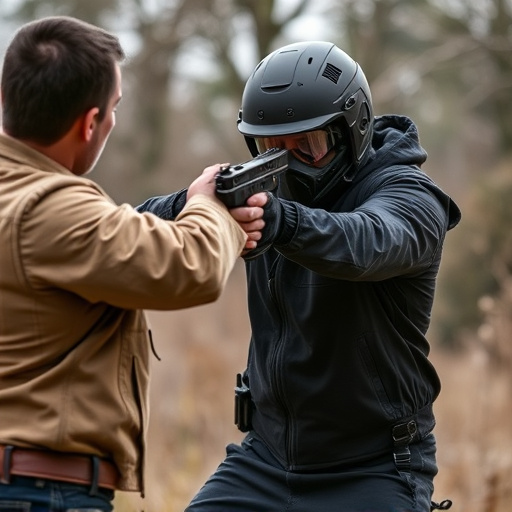
When selecting a stun gun, especially for self-defense purposes, it’s crucial to consider features that cater to your specific needs and comfort level. For women looking for an effective yet accessible best self-defense stun gun, weight and size are key factors. A smaller, lighter device is easier to carry discreetly without drawing unnecessary attention—a significant concern when considering personal safety. Additionally, a stun gun with a simple, intuitive design that requires minimal training to operate can be a game-changer in high-stress situations.
Power and range also play vital roles in self-defense weapons. Look for models with a high joule output, as this indicates the stun gun’s effectiveness. A longer reach or increased stun time allows for more options during an encounter, giving you precious seconds to escape or deter an attacker. Features like a built-in flashlight or loud alarm can also enhance its functionality in various scenarios.
Training and Responsible Use: Empowering Yourself
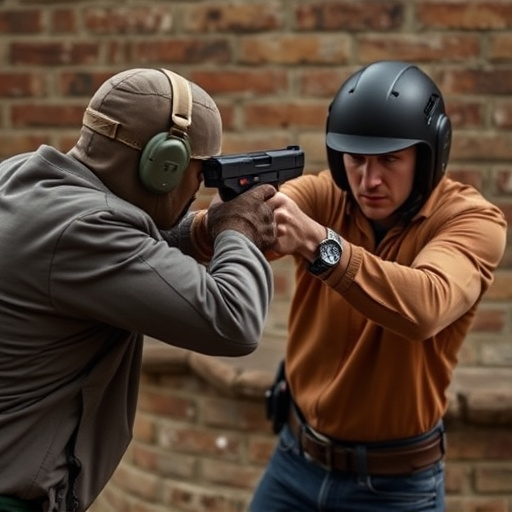
For many women, choosing a best self-defense stun gun is about more than just purchasing a device; it’s about empowering themselves with the knowledge and skills to use it responsibly. Training is an essential step in ensuring that individuals understand how to effectively deploy their stun guns for maximum impact while minimizing risk. Responsible use involves understanding local laws, knowing how to properly handle and store the device, and developing a strategic mindset for self-defense scenarios.
Empowering yourself through training goes beyond just learning how to activate the stun gun; it includes recognizing potential threats, practicing safe escape routes, and cultivating confidence in your abilities. This proactive approach not only enhances personal safety but also encourages a sense of independence and self-reliance, ensuring that women are equipped to handle unexpected situations with poise and determination.
State-Specific Regulations: Navigating Your Rights
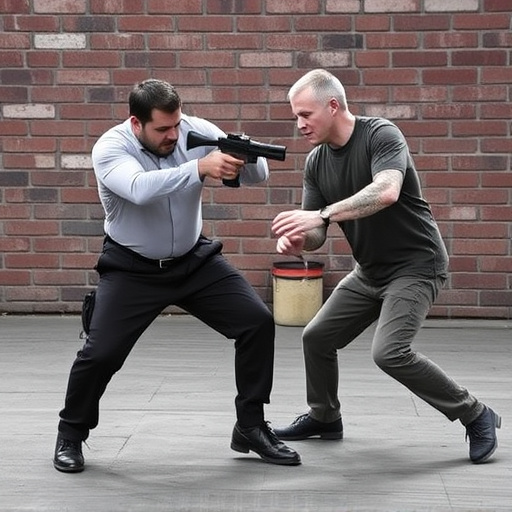
When considering a concealed carry stun gun, understanding state-specific regulations is crucial for ensuring compliance and safety. Each U.S. state has its own set of laws governing the use and possession of stun guns, with varying restrictions and requirements. For women looking for the best self-defense stun gun, navigating these regulations can seem daunting, but it’s essential to know your rights and responsibilities.
States typically categorize stun guns under different classifications, impacting their legality based on factors like voltage output or specific design features. Some states allow open carry or concealed carry with a permit, while others may have restrictions on where and how you can legally use or carry a stun gun. For instance, certain locations like schools, government buildings, or airports often ban the carry of stun guns, even if permitted in other areas. Women considering self-defense options should research their state’s laws to understand what is legal and what isn’t, especially when choosing a stun gun that suits their needs and aligns with their rights.
When considering the best self-defense stun gun for women, it’s crucial to balance personal safety needs with understanding the concealed carry regulations unique to your state. This comprehensive guide has equipped you with knowledge about stun guns, legal considerations, and state-specific rules, empowering you to make an informed decision that aligns with both your rights and responsibilities. Remember, proper training and responsible use are paramount to ensuring your safety and the safety of others.
